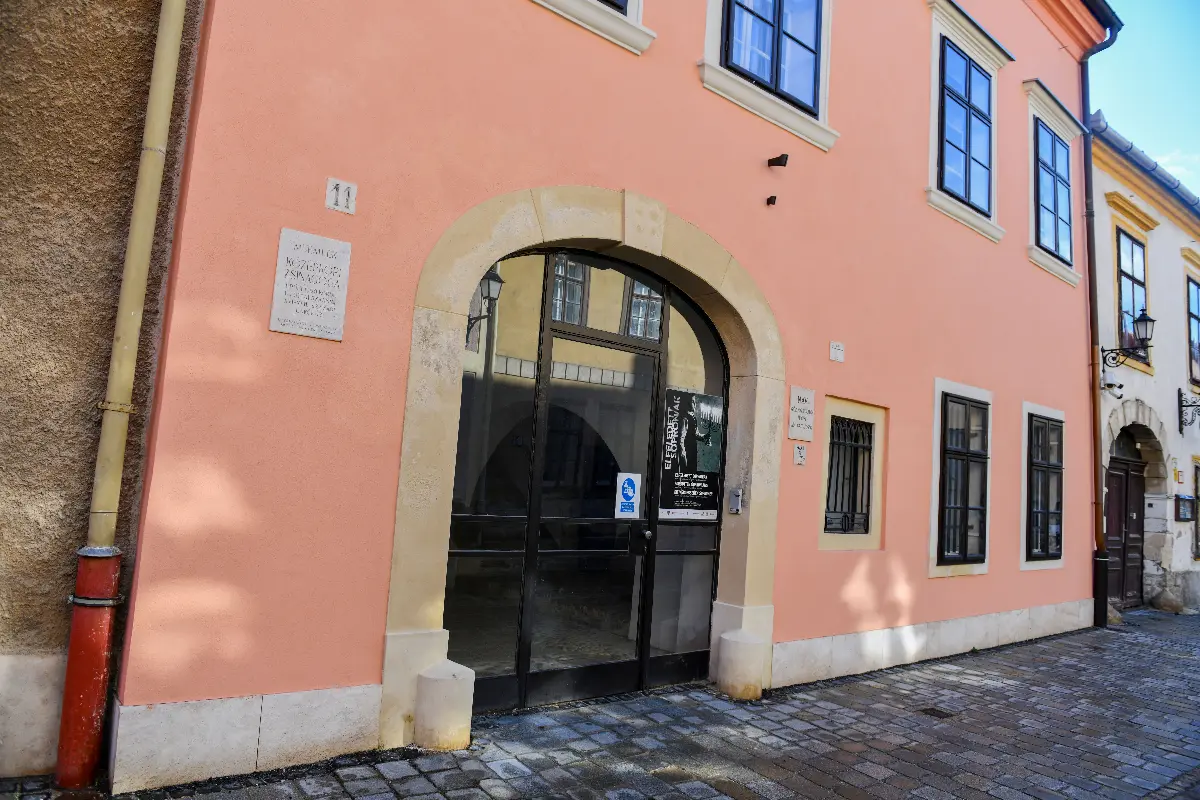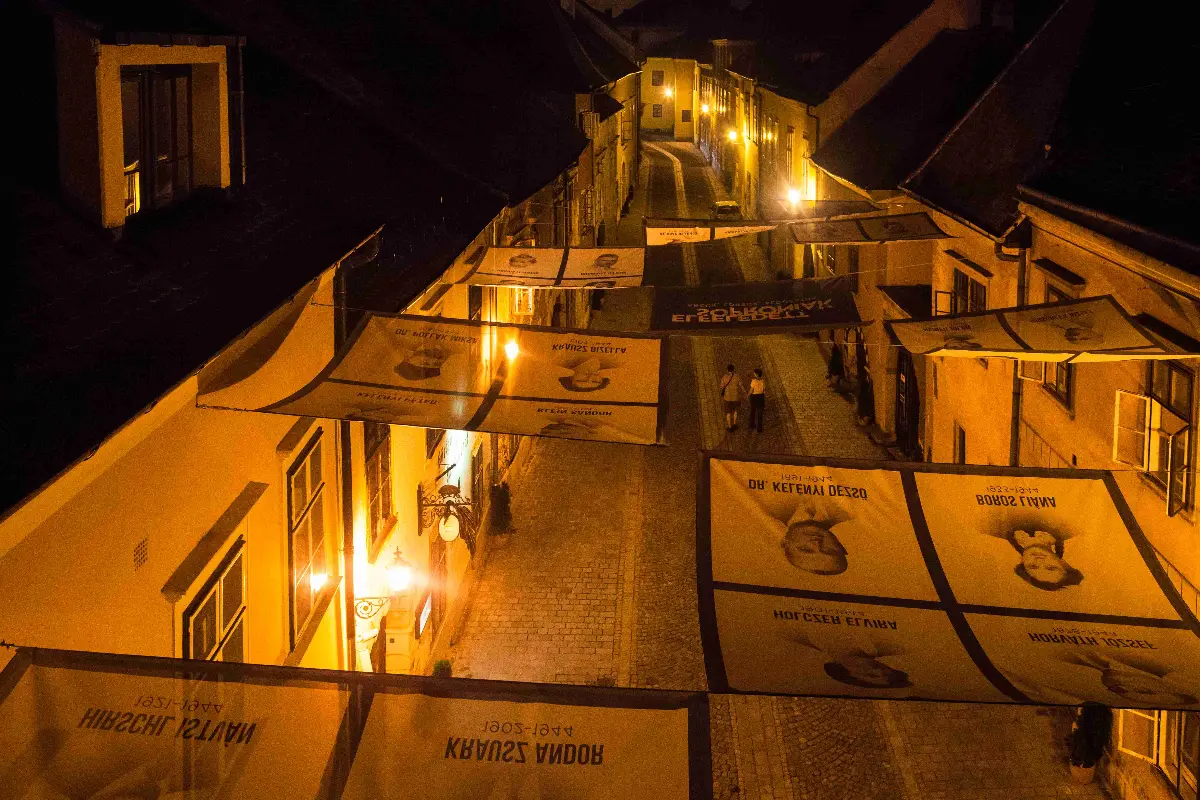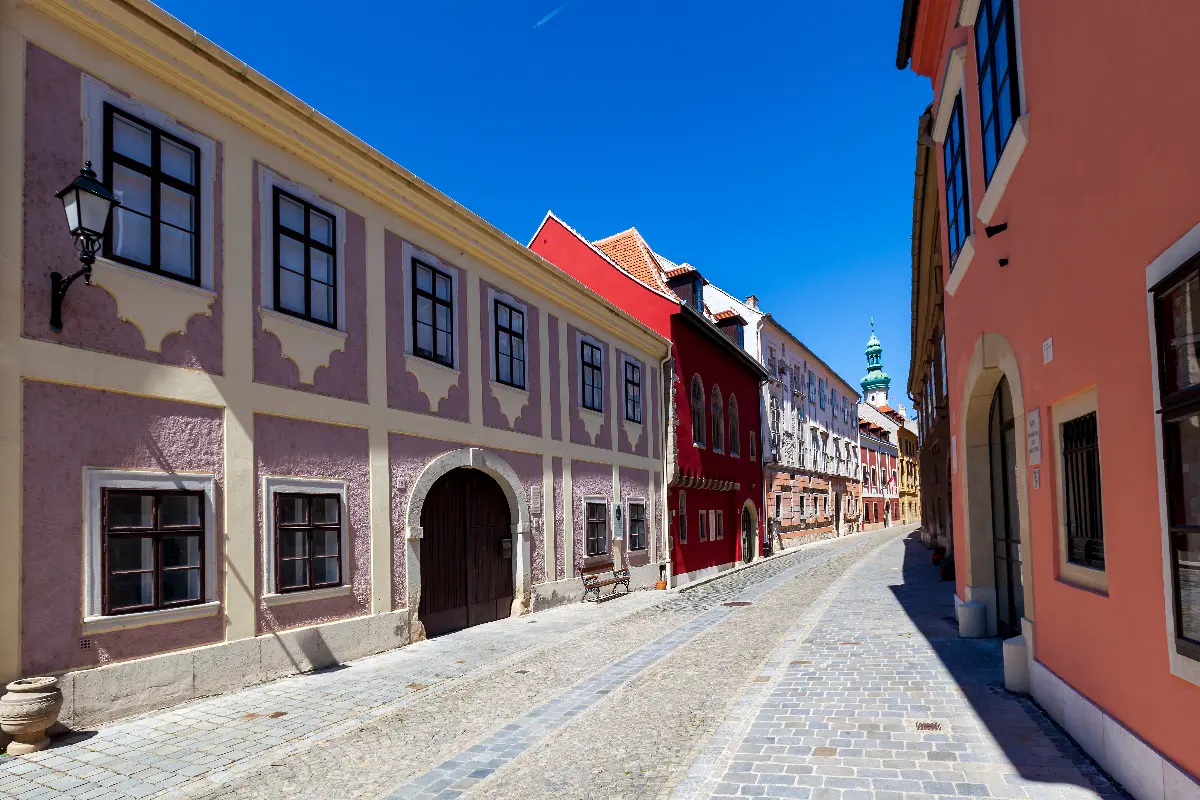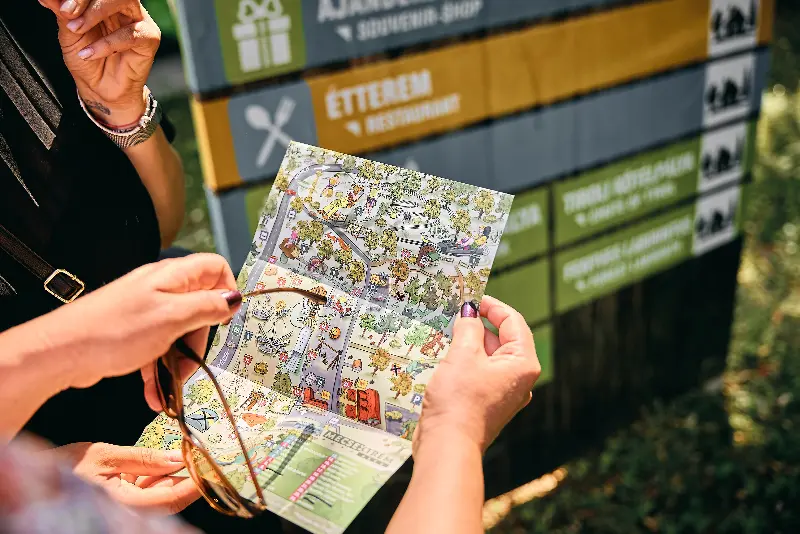
Helyszín címkék:
Why are there two medieval synagogues in the same street in Sopron?
Käesz Judit
We do not know exactly when Jewish citizens settled in the city, but we do know that in the 13thcentury there were already 10-16 Jewish families living in the “Új utca” (New Street), originally called “Zsidó utca” (Judengasse, Jewish Street). The street has been called “Új utca” (New Street) since 1440, and if you look at it today, its layout and shape hardly differ from the medieval one: although the houses have been remodelled and modernised, sometimes adding floors, the medieval part is mostly recognisable. There is little material evidence of the history of medieval Hungarian Jewry: a few tombstones and a few pages torn from their codices, but not a single ruin or synagogue has survived. It is therefore all the more significant that the first medieval synagogue in Sopron was excavated in December 1957. The Jews who lived here were mainly engaged in trade and finance, and were not particularly wealthy, yet in the early 14th century they built the Old Synagogue, and half a century later a private synagogue, the New Synagogue, was built on the same street.

The Old Synagogue was built in the late 12th and early 13th centuries: it was a prayer house, meeting hall and school. The special feature of the synagogue, which is located further inland from the street, is that the triple division of the men's synagogue, women's prayer room and ritual bath is unique among the medieval synagogues of Europe, of which, besides the ones in Prague and Krakow, the synagogue in Sopron could survive. The two rims and the ornate tympanum of the main entrance date back to the time of the synagogue's construction, and are one of the earliest pieces of the Gothic style in Sopron. A special feature of its great hall is the vaulting built according to a rare solution used by wealthy Regensburg merchants in the chapels of their residential towers. The two centres of the synagogue are the Torah seat and the pulpit. Only the base of the pulpit is original, but the layout, the position of the stairs, the high balustrade and the east-facing lectern follow the original pattern. The women had a separate prayer room, with a separate exit, and could only follow the events in the great hall through narrow windows. At the back of the site, you can still see the ritual bath, which is important in the Jewish religion. The Old Synagogue was the synagogue of the parish until the expulsion of the Jews of Sopron in 1526. With the expulsion of the Jewish population, the synagogue was also destroyed and converted into residential buildings. The building was restored to its former splendour in the course of historic research carried out in 1967. The exhibition of the “Soproni Múzeum” (Sopron Museum) is placed in the synagogue.

The other synagogue, the New Synagogue, is located at 11 “Új utca” (New street) and was also built in the Middle Ages. The builder of the private synagogue, built around 1350, was a Jew from Sopron named “Izrael” (Israel), who had to leave the city around 1360 after Louis I the Great expelled the Jews from the Hungarian kingdom by royal decree. He stayed in Vienna and did not return to the city, but the returning Jews continued to run the private synagogue until 1440. At that time, all but four of the Jewish houses in the “Kisvárkerület” (Small Castle District) were given to the owners of the houses demolished for the work on the “Előkapu” (Front Gate) Entering the courtyard, you can clearly see that the synagogue is a separate building, later incorporated into the Baroque residential building on the “Új utca” (New Street). It has only one room, which was used as a Torah room. Below the windows in the eastern wall, the Aaron cabinet can also be seen, and in the centre the platform of the Torah reading table has been reconstructed. The women watched the ceremony through the barred window to the right, under the archway of the residential building. The role of the ritual bath was played by a marble hooped fountain, which can be seen on the right as you enter the gate of the residential building. Here you can see a typical and interesting example of the Sopron gateways: passing through the courtyard, you can exit through the gateway to the “Szent György utca” (St George Street), parallel to the “Új utca” (New Street). Since 2017, the synagogue has also hosted a permanent exhibition, “Az Elfeledett Soproniak - Arcok, sorsok, áldozatok” (The Forgotten Citizens of Sopron – Faces, Fates, Victims), which commemorates the Hungarian Jewish families and individuals living in Sopron and its surroundings before 1944.








